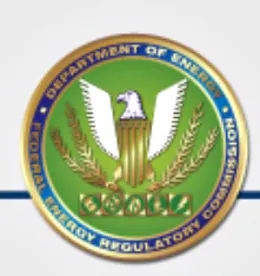On October 15, 2020, the Federal Energy Regulatory Commission (FERC) issued a proposed policy statement encouraging efforts to factor state-determined carbon prices into the rules governing organized wholesale electricity markets. The proposed policy statement follows a September 30, 2020 FERC technical conference focused on carbon pricing in organized electricity markets.
Proposed Policy Statement
FERC’s proposed policy statement on Carbon Pricing in Organized Wholesale Electricity Markets recognizes that states have led the charge in adopting policies to reduce electricity sector greenhouse gas (GHG) emissions. To date, those state policies have taken the form of regulatory requirements on generators, such as the cap-and-trade policies adopted by California and the Northeast states participating in the Regional Greenhouse Gas Initiative (RGGI) in the Northeast, or state policies providing subsidies directly to low carbon generators, such as renewable portfolio standards or zero emission credit policies. Several regional transmission operators (RTOs)[1] , however, are considering policies that would incorporate a carbon emission adder, based on a state determined carbon price, in the bid-based market algorithms for clearing their electricity markets. FERC proposes “to encourage efforts to incorporate a state-determined carbon price in RTO/ISO markets,” because if properly designed and implemented, these efforts would significantly improve the efficiency of those markets.
The proposed policy statement, in essence, seeks to clarify that FERC will not categorically hold proposed market rule changes to incorporate a carbon price into RTO tariffs to be outside its jurisdiction under section 205 of the Federal Power Act (FPA), but rather will consider jurisdiction on a case-by-case basis. FERC supports its finding on jurisdiction under section 205 by pointing to the Supreme Court’s decision in FERC v. Electric Power Supply Association (EPSA). EPSA established a two-part test for determining whether FERC is acting within its jurisdiction to regulate practices affecting wholesale rates. First, the regulated activity must “directly affect” wholesale rates. Second, FERC cannot regulate a matter that FPA section 201(b) reserves for exclusive state jurisdiction.
FERC finds that both prongs of this test can be met for RTO market rule changes to incorporate state-determined carbon prices, explaining that (1) wholesale market rules that incorporate a carbon price directly affect wholesale rates because, depending on the particular circumstances, the rules could govern how resources participate in the RTO market, how market operators dispatch those resources, and how those resources are ultimately compensated; and (2) incorporating a state-determined carbon price into RTO markets would not in any way diminish state authority and would be consistent with cooperative federalism. The proposed policy statement asserts that FERC’s oversight of the effect of carbon pricing on the operation of the markets would not disturb a state’s authority over the level of the carbon price or its powers to regulate generation facilities.
To carry out this policy, FERC will determine whether the rules proposed in any particular FPA section 205 filing fall under its jurisdiction based on the facts and circumstances of that proceeding. Ultimately, if jurisdiction is found, FERC must decide whether an RTO’s market rules that incorporate a state-determined carbon price are just, reasonable, and not unduly discriminatory or preferential. The proposed policy statement lists a number of questions it proposes to consider in making such a determination.
The proposed policy statement addresses only RTO proposals to incorporate state-determined carbon prices into their market rules filed under FPA section 205. It does not address how the FERC would address possible complaints by third parties seeking similar changes. FERC notes, however, that it is not an environmental regulator.
Comments on the proposed policy statement are due November 16, 2020, with reply comments due December 1, 2020.
Commissioner Danly’s Dissent
Commissioner Danly wrote separately, concurring in part and dissenting in part. He noted that the proposed policy statement would not mandate that RTOs adopt regimes that integrate carbon pricing and agreed that FERC has jurisdiction under section 205 to entertain RTO filings that seek to accommodate state carbon-pricing policies. Commissioner Danly argued, however, that issuance of a policy statement on carbon pricing in wholesale markets would be “unnecessary and unwise,” and that FERC should review individual FPA section 205 filings before determining whether a proposal is within FERC’s jurisdiction and consistent with the FPA.
Implications
FERC’s proposed policy statement introduces several considerations for carbon pricing proposals.
First, FERC confirms unanimously that it can exercise jurisdiction over RTO filings to incorporate state-determined carbon prices into wholesale market rules, a point which also found widespread agreement at the September 30th technical conference. The proposed policy statement, however, goes the extra step of encouraging such policies, describing their efficiency benefits for wholesale markets, but the policy statement does not guarantee FERC’s approval of such policies. Rather, it makes clear that FERC could determine that certain designs are not just and reasonable because of their discriminatory impacts.
Second, FERC solicits comments on several key design issues, including what may be the most complicated issue—how proposed RTO rules address the risk of economic or environmental “leakage,” i.e., the shifting of generation (and therefore emissions) out of the state’s jurisdiction to avoid the incidence of the carbon price. Some mechanisms to address leakage could raise issues of discrimination against out-of-state wholesale market participants.
Third, at least one RTO, and several states, already have carbon pricing mechanisms under consideration. The impact of FERC’s proposed policy statement on such proposals may depend on the state policy. For example, the New York Independent System Operator (NYISO) has been developing a policy that would integrate a carbon price into its dispatch determinations. Governor Andrew Cuomo’s Administration is also working on other independent climate policies that would affect the power sector, including a state-wide clean electricity standard, that would not be implemented by NYISO. FERC’s policy statement could boost NYISO’s efforts.
Certain states have carbon policies in place that restrict, or subsidize, generators directly, but do not operate through RTO market rule changes, such as the RGGI. The RGGI is a cap-and-trade program that requires generators to hold allowances for their emissions. The allowance price is reflected in generator bids to the organized markets, indirectly affecting electricity prices, but the program itself, and the cost for the emissions allowances, is not managed by the RTO. It is unclear whether the policy statement, if finalized, will lead states to shift their GHG policy designs to favor approaches that are directly integrated into RTO market design.
Fourth, FERC has issued its proposed policy statement at a time when there are many questions about the extent to which organized markets should or can adapt to the interests that some states have in enacting ambitious policies to decarbonize the grid. Last week, the Governors of five New England states issued a statement calling for reforms to the New England Independent System Operator’s market rules to facilitate meeting their decarbonization goals. Fifteen states, Puerto Rico, and the District of Columbia have set goals to decarbonize their electric power sector on stated timelines, and these states are not relying solely on carbon pricing. For example, twenty-nine states and the District of Columbia have adopted Renewable Portfolio Standards or Clean Electricity Standards programs, which require increasing portions of electricity sales to come from zero-emitting resources. States also have enacted other policies that directly subsidize certain types of clean energy resources. The policy statement does not address how such policies are integrated, or considered, within the RTO markets.
FERC’s consideration of the Minimum Offer Price Rule (MOPR), however, in the PJM Interconnection (PJM) may be instructive. The MOPR is designed to counteract state subsidies that may distort capacity markets and disfavor fossil fuel generators, arousing the ire of several states that believe it illegitimately undermines their climate and clean energy policies. Several states have filed legal challenges to the latest MOPR changes, and the order has prompted a number of states to consider exiting PJM’s capacity market, including New Jersey, Maryland, New York, and Illinois.
Finally, FERC’s action raises questions about how its policy could be affected by different outcomes in the November elections. A victory by President Trump could lead states to double down on their climate and clean energy policies. A victory by Joe Biden, on the other hand, would be expected to kick off much more active efforts to try to address climate change at the federal level. The Biden Climate Plan, for instance, calls for Congressional enactment of a nation-wide clean electricity standard that would require 100 percent of power to come from zero-emitting resources by 2035. Either way, the number of climate change policies affecting the power generation sector, and either directly or indirectly the organized electricity markets, is likely to continue to grow.
1] For convenience, we refer to regional transmission organizations and independent system operators as “RTOs.”







 />i
/>i

